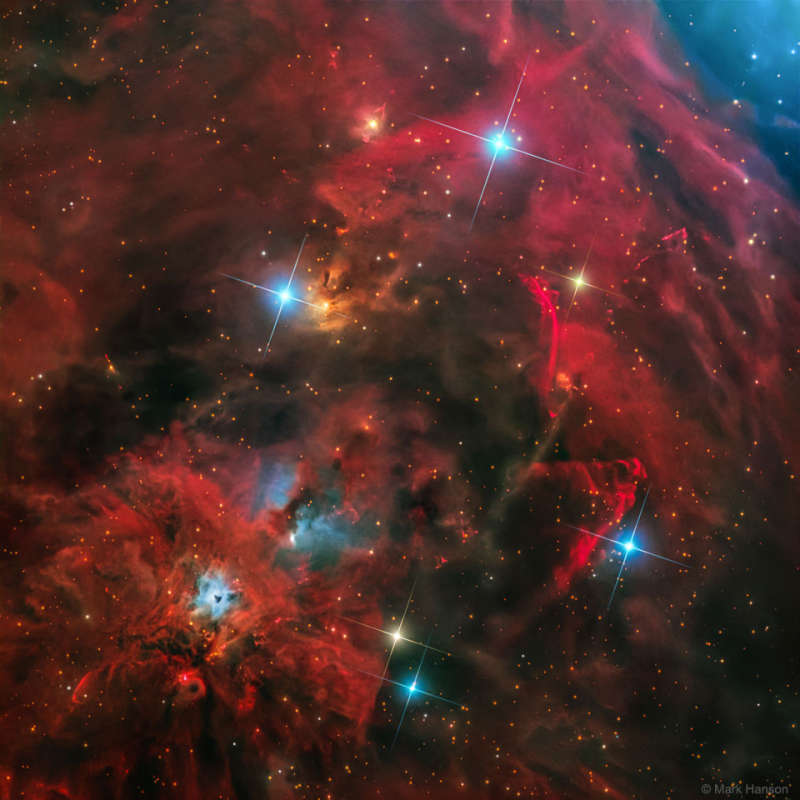
|
Credit & Copyright: Mark Hanson
Explanation:
This tantalizing array of nebulas and stars can be found
about two degrees south of the famous
star-forming
Orion Nebula.
The
region abounds with energetic young stars producing jets and
outflows that push through the surrounding
material at speeds of hundreds of kilometers per second.
The interaction creates luminous shock
waves known as
Herbig-Haro (HH) objects.
For example, the graceful, flowing arc just right of center
is cataloged as
HH 222, also called the
Waterfall Nebula.
Seen below the Waterfall, HH 401 has a distinctive cone shape.
The bright bluish nebula below and left of center
is NGC 1999, a dusty cloud reflecting
light from an embedded variable star.
The entire cosmic vista spans over 30 light-years, near the edge of the
Orion Molecular Cloud
Complex
some 1,500 light-years distant.
Open Science:
Browse 1,600+ codes in the Astrophysics Source Code Library
|
January February March April May June July August September October November December |
| ||||||||||||||||||||||||||||||||||||||||||||||||
NASA Web Site Statements, Warnings, and Disclaimers
NASA Official: Jay Norris. Specific rights apply.
A service of: LHEA at NASA / GSFC
& Michigan Tech. U.
Based on Astronomy Picture
Of the Day
Publications with keywords: Orion - Herbig-Haro object
Publications with words: Orion - Herbig-Haro object
See also:
- APOD: 2025 April 9 Á HH 49: Interstellar Jet from Webb
- APOD: 2025 February 19 Á HH 30: A Star System with Planets Now Forming
- A December Winter Night
- APOD: 2024 January 31 Á Camera Orion Rising
- APOD: 2024 January 16 Á The Orion You Can Almost See
- APOD: 2023 September 19 Á HH 211: Jets from a Forming Star
- Young Stars, Stellar Jets
